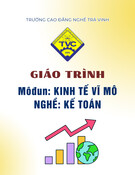
Technical Summary
This extract has been prepared by IASC Foundation staff and has not been approved by the IASB.
For the requirements reference must be made to International Financial Reporting Standards.
IAS 39 Financial Instruments: Recognition
and Measurement
The objective of this Standard is to establish principles for recognising and measuring
financial assets, financial liabilities and some contracts to buy or sell non-financial
items. Requirements for presenting information about financial instruments are in
IAS 32 Financial Instruments: Presentation. Requirements for disclosing information
about financial instruments are in IFRS 7 Financial Instruments: Disclosures.
Initial recognition
An entity shall recognise a financial asset or a financial liability on its balance sheet
when, and only when, the entity becomes a party to the contractual provisions of the
instrument.
Derecognition of a financial liability
An entity shall remove a financial liability (or a part of a financial liability) from its
balance sheet when, and only when, it is extinguished—ie when the obligation
specified in the contract is discharged or cancelled or expires.
Initial measurement of financial assets and financial liabilities
When a financial asset or financial liability is recognised initially, an entity shall
measure it at its fair value plus, in the case of a financial asset or financial liability not
at fair value through profit or loss, transaction costs that are directly attributable to the
acquisition or issue of the financial asset or financial liability.
Fair value is the amount for which an asset could be exchanged, or a liability settled,
between knowledgeable, willing parties in an arm’s length transaction.
Derecognition of a financial asset
The following flow chart illustrates the evaluation of whether and to what extent a
financial asset is derecognised.

Subsequent measurement of financial assets
For the purpose of measuring a financial asset after initial recognition, this Standard
classifies financial assets into the following four categories defined in paragraph 9:
(a) financial assets at fair value through profit or loss;
(b) held-to-maturity investments;
(c) loans and receivables; and
(d) available-for-sale financial assets.
An amendment to the Standard, issued in June 2005, permits an entity to designate a
financial asset or financial liability (or a group of financial assets, financial liabilities

or both) on initial recognition as one(s) to be measured at fair value, with changes in
fair value recognised in profit or loss. To impose discipline on this categorisation, an
entity is precluded from reclassifying financial instruments into or out of this
category.
After initial recognition, an entity shall measure financial assets, including derivatives
that are assets, at their fair values, without any deduction for transaction costs it may
incur on sale or other disposal, except for the following financial assets:
(a) loans and receivables as defined in paragraph 9, which shall be measured at
amortised cost using the effective interest method;
(b) held-to-maturity investments as defined in paragraph 9, which shall be measured
at amortised cost using the effective interest method; and
(c) investments in equity instruments that do not have a quoted market price in an
active market and whose fair value cannot be reliably measured and derivatives
that are linked to and must be settled by delivery of such unquoted equity
instruments, which shall be measured at cost (see Appendix A paragraphs AG80
and AG81).
Financial assets that are designated as hedged items are subject to measurement under
the hedge accounting requirements in paragraphs 89–102. All financial assets except
those measured at fair value through profit or loss are subject to review for
impairment in accordance with paragraphs 58–70 and Appendix A paragraphs AG84–
AG93.
Subsequent measurement of financial liabilities
After initial recognition, an entity shall measure all financial liabilities at amortised
cost using the effective interest method, except for:
(a) financial liabilities at fair value through profit or loss. Such liabilities, including
derivatives that are liabilities, shall be measured at fair value except for a
derivative liability that is linked to and must be settled by delivery of an unquoted
equity instrument whose fair value cannot be reliably measured, which shall be
measured at cost.
(b) financial liabilities that arise when a transfer of a financial asset does not qualify
for derecognition or when the continuing involvement approach applies.
Paragraphs 29 and 31 apply to the measurement of such financial liabilities.
(c) financial guarantee contracts as defined in paragraph 9. After initial recognition,
an issuer of such a contract shall (unless paragraph 47(a) or (b) applies) measure it
at the higher of:
(i) the amount determined in accordance with IAS 37 Provisions, Contingent
Liabilities and Contingent Assets; and
(ii) the amount initially recognised (see paragraph 43) less, when appropriate,
cumulative amortisation recognised in accordance with IAS 18 Revenue.
(d) commitments to provide a loan at a below-market interest rate. After initial
recognition, an issuer of such a commitment shall (unless paragraph 47(a) applies)
measure it at the higher of:
(i) the amount determined in accordance with IAS 37; and
(ii) the amount initially recognised (see paragraph 43) less, when appropriate,
cumulative amortisation recognised in accordance with IAS 18.
Gains and losses

A gain or loss arising from a change in the fair value of a financial asset or financial
liability that is not part of a hedging relationship, shall be recognised, as follows.
(a) A gain or loss on a financial asset or financial liability classified as at fair value
through profit or loss shall be recognised in profit or loss.
(b) A gain or loss on an available-for-sale financial asset shall be recognised directly
in equity, through the statement of changes in equity, except for impairment losses
and foreign exchange gains and losses, until the financial asset is derecognised, at
which time the cumulative gain or loss previously recognised in equity shall be
recognised in profit or loss. However, interest calculated using the effective
interest method is recognised in profit or loss. Dividends on an available-for-sale
equity instrument are recognised in profit or loss when the entity’s right to receive
payment is established.
For financial assets and financial liabilities carried at amortised cost a gain or loss is
recognised in profit or loss when the financial asset or financial liability is
derecognised or impaired, and through the amortisation process. However, for
financial assets or financial liabilities that are hedged items the accounting for the gain
or loss shall follow paragraphs 89–102.
Impairment and uncollectibility of financial assets
An entity shall assess at each balance sheet date whether there is any objective
evidence that a financial asset or group of financial assets is impaired.
Hedging
If there is a designated hedging relationship between a hedging instrument and a
hedged item as described in paragraphs 85–88 and Appendix A paragraphs AG102–
AG104, accounting for the gain or loss on the hedging instrument and the hedged item
shall follow paragraphs 89–102.
Hedging relationships are of three types:
(a) fair value hedge: a hedge of the exposure to changes in fair value of a recognised
asset or liability or an unrecognised firm commitment, or an identified portion of
such an asset, liability or firm commitment, that is attributable to a particular risk
and could affect profit or loss.
(b) cash flow hedge: a hedge of the exposure to variability in cash flows that (i) is
attributable to a particular risk associated with a recognised asset or liability (such
as all or some future interest payments on variable rate debt) or a highly probable
forecast transaction and (ii) could affect profit or loss.
(c) hedge of a net investment in a foreign operation as defined in IAS 21.
If a fair value hedge meets the conditions in paragraph 88 during the period, it shall be
accounted for as follows:
(a) the gain or loss from remeasuring the hedging instrument at fair value (for a
derivative hedging instrument) or the foreign currency component of its carrying
amount measured in accordance with IAS 21 (for a non-derivative hedging
instrument) shall be recognised in profit or loss; and

(b) the gain or loss on the hedged item attributable to the hedged risk shall adjust the
carrying amount of the hedged item and be recognised in profit or loss. This
applies if the hedged item is otherwise measured at cost. Recognition of the gain
or loss attributable to the hedged risk in profit or loss applies if the hedged item is
an available-for-sale financial asset.
If a cash flow hedge meets the conditions in paragraph 88 during the period, it shall be
accounted for as follows:
(a) the portion of the gain or loss on the hedging instrument that is determined to be
an effective hedge (see paragraph 88) shall be recognised directly in equity
through the statement of changes in equity; and
(b) the ineffective portion of the gain or loss on the hedging instrument shall be
recognised in profit or loss.
Hedges of a net investment in a foreign operation, including a hedge of a monetary
item that is accounted for as part of the net investment (see IAS 21), shall be
accounted for similarly to cash flow hedges:
(a) the portion of the gain or loss on the hedging instrument that is determined to be
an effective hedge (see paragraph 88) shall be recognised directly in equity
through the statement of changes in equity; and
(b) the ineffective portion shall be recognised in profit or loss.





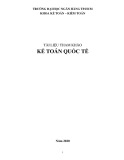
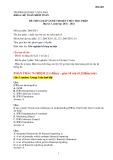


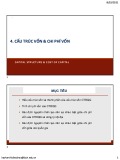
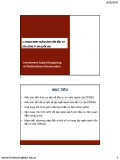







![Đề thi Kế toán ngân hàng kết thúc học phần: Tổng hợp [Năm]](https://cdn.tailieu.vn/images/document/thumbnail/2025/20251014/embemuadong09/135x160/19181760426829.jpg)





